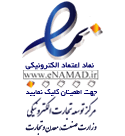H Davoodi, S R Hashemi, H F Seow, M Ghorbani,
Volume 3, Issue 2 (10-2009)
Abstract
Abstract Background and objectives: Paraffin-embedded tissues and clinical samples are a valuable resource for molecular genetic studies, but the extraction of high-quality genomic DNA from this tissues is still a problematic issue. In the Present study, the efficiency of two DNA extraction protocols, a commercial kit and a traditional method based on heating and K Proteinase was compared. Material and Methods: Fifty paraffin-embedded blocks of colon cancer tissues (more than 5 years old) were used to compare two methods of DNA extraction. DNA was extracted by traditional method using heat and commercial DNA extraction (Qiagen kit) method. Then the purity and concentration of extracted DNA were measured by Spectrophotometer. Two sequences of TLR4 “The most important receptors in innate immunity” were amplified by polymerase chain reaction. SH-1 ‘188bp’ and SH-2 ‘124bp’ were amplified and then the products were separated on a 2% agarose gel. Results: The results show that the yield of DNA by traditional method (297 mg/ml) is significantly (p<0.01) higher than Commercial kit (176mg/ ml). But traditional method has the lower OD ratio (1.2) Compared to Commercial method. The Amplification of the TLR4 gene sequences is more successful by the traditional method (p<0.01) compared with commercial method. The length of the sequence affects on the results of PCR in that short sequence is amplified more successful compared to the long sequence. Conclusion: The traditional method is more successful in PCR amplification and also simple and cheap. Therefore, we recommend using this method for DNA extraction taken from the paraffin-embedded blocks with more than 5 years old and selecting shorter sequence for better amplification in PCR. Key words: DNA Extraction, paraffin embedded tissue, PCR
Mousazade Moghadam M, Babavalian H, Mirnejad R, Shakeri F,
Volume 6, Issue 1 (4-2012)
Abstract
Abstract
Background and objectives: Genomic DNA extraction of bacterial cells is of processes performed normally in most biological laboratories therefore, various methods have been offered, manually and kit, which may be time consuming and costly. In this paper, genomic DNA extraction of Staphylococcus aureus was investigated using some laundry detergent brands available in Iran to achieve a rapid and cost effective method.
Material and Methods: five-enzyme Taj brand, three-enzyme Saftlan brand ,and Darya and Pak brands without enzyme were used in the concentrations of 10, 20, 40, 80 mg/L. Afterwards, in order to evaluate the efficiency of extracted DNA in downstream processing, PCR test was performed for femA gene in the genome of Staphylococcus aureus.
Results: DNA extraction using different concentrations of the brands show that extracted DNA using 40 mg/L Saftlan and Taj brand powders have the best results according concentration (µg/ml) and purity (A260/A280) parameters. These parameters are 387.5 1.88 (Taj), 254.1 2.80 (Softlan), 396.6 1.95 (Manual) and 423.3 2.2 (Kit), respectively. Afterward, the PCR test results by show that DNA extraction using laundry detergents has no effect on its efficiency in order to be used in downstream processes.
Conclusion: These results indicate that the proper concentrations of laundry detergents can be used to extract genomic DNA with similar efficiency to kit and manual extraction methods.
Key words: Bacterial genome, DNA extraction, laundry powder, PCR, Staphylococcus aureus




